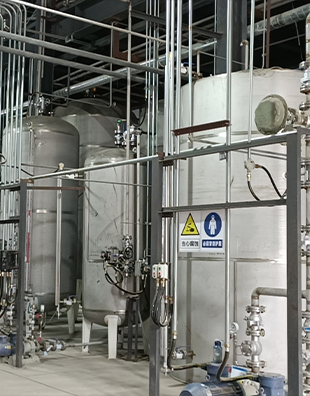chemical coagulation and flocculation water treatment
Chemical Coagulation and Flocculation in Water Treatment
Water is an essential resource for life on Earth. However, as urbanization and industrialization increase, the quality of water sources has deteriorated due to the introduction of various pollutants. To ensure the safety and cleanliness of our water supply, efficient treatment processes are necessary. One of the most effective methods employed in water treatment is chemical coagulation and flocculation, which are pivotal processes aimed at removing suspended solids, colloids, and other impurities from water.
Understanding Coagulation and Flocculation
Coagulation is the first stage in the treatment process, where chemicals, known as coagulants, are added to water to destabilize and agglomerate fine particulate matter. This destabilization occurs because the charges on the particles are neutralized. Common coagulants include aluminum sulfate (alum), iron (III) salts, and polymers. These chemicals are positively charged, allowing them to attract and bind to negatively charged particles suspended in the water.
Following coagulation, the next step is flocculation. This process involves the gentle mixing of the water to encourage the coagulated particles, or “flocs,” to grow larger. The formation of larger particles takes place through a series of collisions and bonding between smaller particles. Flocculation not only increases the size of the flocs but also improves their settleability, making it easier to separate them from the treated water.
The Benefits of Chemical Coagulation and Flocculation
Chemical coagulation and flocculation offer numerous advantages in water treatment. Firstly, they effectively remove a wide range of contaminants, including turbidity, bacteria, viruses, and organic compounds. The combination of these processes leads to significantly clearer and cleaner water, which is critical for both drinking and recreational purposes.
Secondly, these methods are versatile and can be adapted to treat various water sources, including surface water, groundwater, and wastewater. The choice of coagulants can be tailored based on the characteristics of the water and the types of contaminants present. For instance, in water sources with high organic matter content, organic coagulants may be preferred due to their ability to effectively remove dissolved organic materials.
chemical coagulation and flocculation water treatment

Thirdly, the processes are relatively straightforward and can be integrated into existing water treatment systems without requiring major modifications. This adaptability makes chemical coagulation and flocculation appealing for municipalities and industries seeking efficient treatment solutions.
Challenges and Considerations
Despite their effectiveness, chemical coagulation and flocculation are not without challenges. One concern is the potential introduction of chemicals into the treated water. Residual coagulants must be carefully managed to ensure that they do not exceed safe levels, as some coagulants can have toxic effects if left inappropriately high.
Another consideration is the formation of sludge, which is the byproduct generated from the coagulation and flocculation processes. Proper management and disposal of this sludge are critical, as it often contains a mixture of contaminants that need to be treated before disposal.
Moreover, environmental regulations and public health standards necessitate continuous monitoring of water quality throughout the treatment process. Advanced testing and monitoring technologies can enhance the effectiveness of coagulation and flocculation by ensuring optimal conditions for the processes to take place.
Future Directions
As we strive for improved water quality and sustainable practices, future developments in chemical coagulation and flocculation are likely to focus on innovative materials and processes. Research into alternative coagulants, such as bio-coagulants derived from natural sources, may provide safer and more sustainable options. Furthermore, integrating coagulation and flocculation with other treatment processes, such as membrane filtration and advanced oxidation, can enhance removal efficiencies and produce water of even higher quality.
In conclusion, chemical coagulation and flocculation are critical components of modern water treatment systems. By effectively removing contaminants and improving water clarity, these processes play a vital role in ensuring safe and clean water. As we face increasing challenges related to water pollution and scarcity, continuing to improve and optimize these methods will be essential for sustainable water management in the future.
-
The Power of Isothiazolinones in Modern ApplicationsNewsMay.08,2025
-
Flocculants in Water TreatmentNewsMay.08,2025
-
Flocculants and Chemical Solutions: What You Need to KnowNewsMay.08,2025
-
Flocculants and Chemical Solutions: A Growing IndustryNewsMay.08,2025
-
Essential Chemicals: Polymaleic Anhydride and MoreNewsMay.08,2025
-
Acrylic Polymers: Essential Solutions for IndustryNewsMay.08,2025





